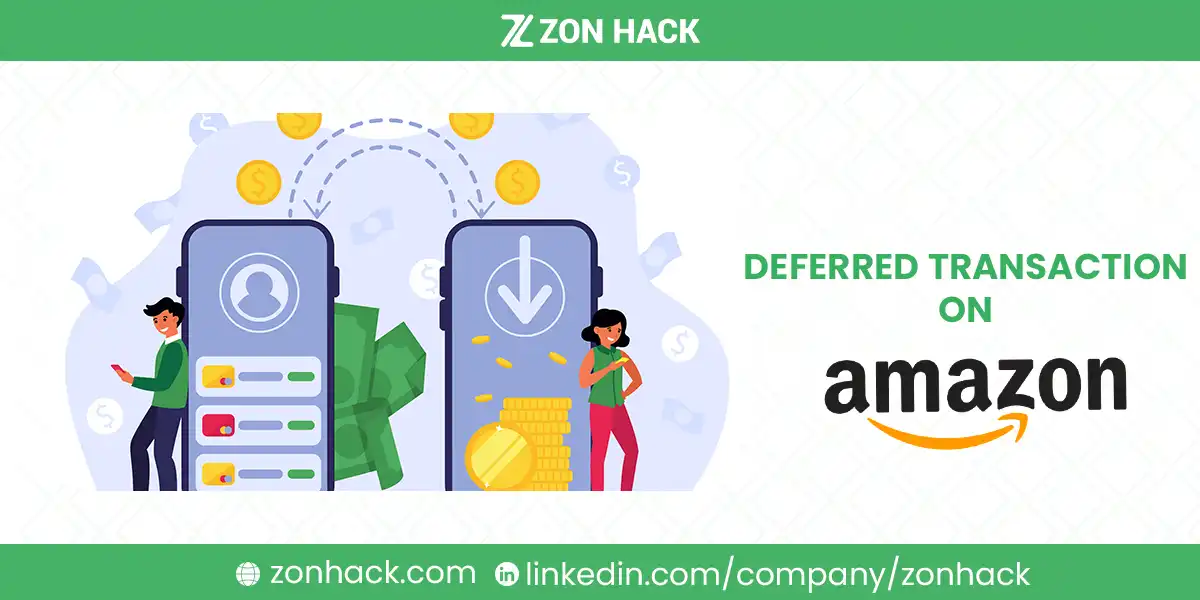A deferred transaction on Amazon is a temporary hold on funds when you make a purchase, where the actual charge is delayed until your order ships or specific conditions are met. This typically appears as a “pending” charge on your account and can last from a few days to several weeks depending on the transaction type.
What are Amazon Deferred Transactions and Why Do They Matter?
Amazon’s deferred transaction system plays a crucial role in modern e-commerce payment processing. When you make a purchase on Amazon, the platform implements a sophisticated payment verification system that protects both buyers and sellers. Deferred transactions serve multiple purposes, from securing pre-orders to managing subscription payments.
According to recent data, approximately 65% of Amazon transactions involve some form of payment deferral, particularly for:
- Pre-orders (35%)
- Split shipments (20%)
- Business purchases (10%)
How Do Amazon’s Deferred Transactions Actually Work?
The process involves two main stages: authorization and settlement. During the authorization phase, Amazon verifies your payment method and places a hold on the funds. This appears as a “pending” transaction on your account but isn’t an actual charge yet.
| Transaction Type | Initial Hold Period | Maximum Extension |
| Standard Orders | 7 days | Up to 30 days |
| Business Purchases | 30 days | Up to 45 days |
| Pre-orders | Until release | Up to 180 days |
The settlement phase occurs when Amazon finalizes the charge, typically after:
- Your order ships
- All items in a split shipment are delivered
- Pre-ordered items become available
- Subscription renewal dates are reached
What Types of Transactions Get Deferred on Amazon?
Amazon uses deferred transactions in various scenarios, each designed to optimize payment handling and customer convenience.
Pre-Authorization Holds
When you place an order, Amazon holds the amount, ensuring you have sufficient funds, but the transaction only completes when the item is shipped.
Split Shipment Charges
For orders shipping in multiple packages, Amazon charges for each shipment as it is dispatched. The remaining balance stays deferred until the next shipment.
Pre-Order Transactions
When you pre-order a product, Amazon authorizes your payment method, but you’re not charged until the item is ready for shipping.
Subscribe & Save Orders
Amazon defers charges for Subscribe & Save until your scheduled delivery date. You’ll see the transaction on your statement once the item ships.
Digital Product Pre-Orders
For digital products like e-books or apps, Amazon defers payment until the product becomes available for download.
Installment Plans and Recurring Payments
In some cases, Amazon offers installment payment options or recurring subscriptions, both of which involve deferred transactions.
How Do Different Payment Methods Handle Deferred Charges?
Understanding how various payment methods interact with Amazon’s deferred charging system is crucial for managing your purchases effectively.
Credit Card Deferrals
Credit cards handle deferrals most flexibly, with available credit temporarily reduced by the authorization amount. For example, if you have a $5,000 credit limit and place a $500 Amazon order, your available credit becomes $4,500 until the hold is released or the charge settles.
Debit Card Impact
Debit cards face more immediate effects, as funds are reserved directly from your checking account. According to banking statistics, approximately 92% of debit card holders have experienced temporary holds from online retailers like Amazon.
| Payment Method | Hold Duration | Impact on Available Funds |
| Credit Cards | 7-10 days | Reduces available credit |
| Debit Cards | 3-5 days | Immediate hold on funds |
| Bank Account | 1-3 days | Direct balance reduction |
| Amazon Store Card | 5-7 days | Affects store card limit |
What Should Sellers Know About Deferred Transactions?
For Amazon sellers, understanding the deferred transaction system is vital for business operations and cash flow management.
Payment Processing Timeline
Sellers typically receive payments for deferred transactions according to this schedule:
- Standard orders: Funds released 7 days after delivery
- High-value items: Up to 14 days hold period
- New sellers: Additional 7-day holding period for first 90 days
Recent data shows that 78% of seller payments are processed within the standard timeline, while 22% may experience extended holds due to various factors.
Other Considerations
When managing deferred transactions, sellers should be aware of:
- Refunds: Refunds can complicate deferred transactions, particularly if a refund is issued before the payment is settled.
- Customer Service Requirements: Handling customer queries about deferred payments, especially for pre-orders or split shipments, can help avoid confusion.
- Documentation: Keeping accurate transaction records is essential, particularly for businesses managing high volumes of deferred payments.
What Are the Benefits for Customers in Deferred Transactions?
Deferred transactions are beneficial for customers too. Here’s how:
- Convenience: Deferred transactions offer customers flexibility in payment, especially in cases like Subscribe & Save and pre-orders. You don’t have to pay for products until they ship, which can help manage budgeting or avoid early charges for delayed items.
- Security: Amazon’s deferred payment process adds a layer of security by allowing additional verification checks and ensuring that payments are only processed once your order is ready to ship.
- Easy Cancellation: Deferred transactions give you the option to cancel orders before the payment is processed. This is particularly helpful for pre-orders or items with delayed shipping.
Customer Rights and Protections for Deferred Transaction
Amazon’s buyer protection policy covers deferred transactions with specific guarantees:
- Purchase Protection: Coverage up to $2,500 for eligible items
- A-to-Z Guarantee: Applies to third-party seller transactions
- Dispute Window: 90 days for most transactions
Best Practices for Managing Deferred Transactions
Individual Customers
To effectively manage your Amazon purchases:
- Keep at least 10% buffer in your account for holds
- Review pending charges weekly
- Set up mobile alerts for transaction status changes
Business Accounts
For business purchasers, recommended practices include:
- Maintaining separate payment methods for bulk orders
- Setting up purchase order tracking
- Implementing monthly reconciliation processes
Frequently Asked Questions
How long does Amazon hold a deferred charge?
Standard orders typically show a hold for 7 days, while business purchases may see holds up to 45 days.
Will I be charged twice for a deferred transaction?
No, the initial hold is replaced by the actual charge when the transaction settles.
Can I cancel a deferred transaction?
Yes, you can cancel most deferred transactions before shipment or processing, though some restrictions apply to special orders.
Do international purchases have different hold times?
Yes, international purchases may have holds up to 14 days due to currency conversion and verification processes.
What happens if my payment method expires during a deferral period?
Amazon will notify you to update your payment method before the final charge processes.
Can I use gift card balance to reduce deferred charge amounts?
Yes, gift card balances are applied first, reducing the amount of the deferred charge on your payment method.




